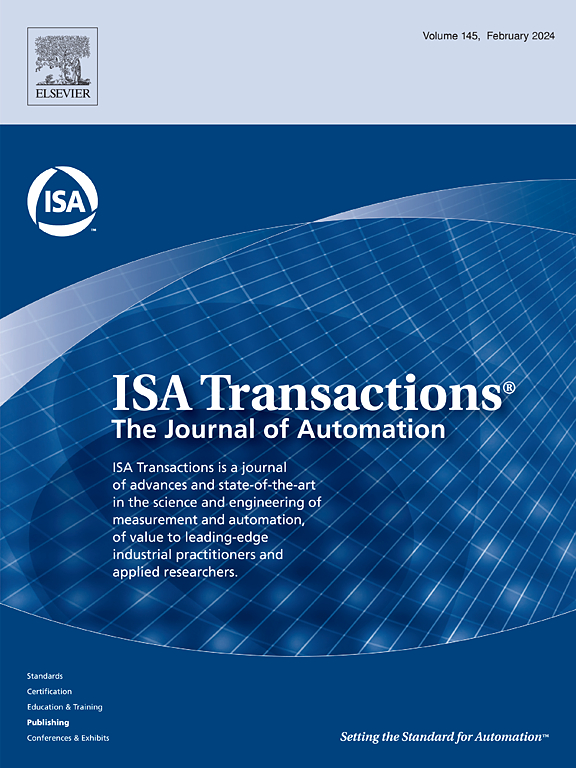Stochastic nonlinear system modelling and parametric oscillation response characteristics of gas turbines
IF 6.5
2区 计算机科学
Q1 AUTOMATION & CONTROL SYSTEMS
引用次数: 0
Abstract
Gas turbines, as highly complex thermal systems, exhibit significant nonlinearity and stochastic coupling in process control. Under closed-loop automatic speed regulation, persistent parametric oscillations may arise, posing serious threats to system reliability and safety. Aiming to reveal the stochastic response characteristics of parametric oscillations in gas turbines, this paper proposes a novel framework for analyzing the evolution law of parametric oscillation and multi-source stochastic excitations based on stochastic dynamics model, which is derived from thermodynamic equations and verified by measurement data. The internal stochastic excitation is determined by information entropy, while the form of the stochastic process of the external stochastic excitation is identified through data-driven reverse identification. The PDF evolution law of parametric oscillation is studied for different excitation forms, and the bifurcation behavior and sensitivity analysis of them are carried out. Under typical operating conditions, the synergistic effect of internal and external stochastic excitations reduces parametric oscillation amplitude by approximately 31 % compared to internal excitation alone. Moreover, the originally tri-modal distribution evolves into a unimodal pattern, revealing the transition trend of parametric oscillation behavior in gas turbines. These findings offer an effective approach to analyze parametric oscillation.
燃气轮机随机非线性系统建模与参数振荡响应特性。
燃气轮机作为高度复杂的热力系统,其过程控制具有显著的非线性和随机耦合性。在闭环自动调速过程中,可能产生持续的参数振荡,对系统的可靠性和安全性构成严重威胁。为了揭示燃气轮机参数振荡的随机响应特性,本文提出了一种基于随机动力学模型的参数振荡和多源随机激励演化规律分析的新框架,该框架由热力学方程推导并经实测数据验证。内部随机激励由信息熵决定,外部随机激励的随机过程形式通过数据驱动的反向识别来识别。研究了不同激励形式下参数振荡的PDF演化规律,并对其分岔行为和灵敏度进行了分析。在典型的工作条件下,与单独的内部激励相比,内部和外部随机激励的协同效应使参数振荡幅度减小了约31% %。此外,原三模态分布演变为单模态分布,揭示了燃气轮机参数振荡行为的转变趋势。这些发现为分析参数振荡提供了有效的方法。
本文章由计算机程序翻译,如有差异,请以英文原文为准。
求助全文
约1分钟内获得全文
求助全文
来源期刊

ISA transactions
工程技术-工程:综合
CiteScore
11.70
自引率
12.30%
发文量
824
审稿时长
4.4 months
期刊介绍:
ISA Transactions serves as a platform for showcasing advancements in measurement and automation, catering to both industrial practitioners and applied researchers. It covers a wide array of topics within measurement, including sensors, signal processing, data analysis, and fault detection, supported by techniques such as artificial intelligence and communication systems. Automation topics encompass control strategies, modelling, system reliability, and maintenance, alongside optimization and human-machine interaction. The journal targets research and development professionals in control systems, process instrumentation, and automation from academia and industry.
 求助内容:
求助内容: 应助结果提醒方式:
应助结果提醒方式:


